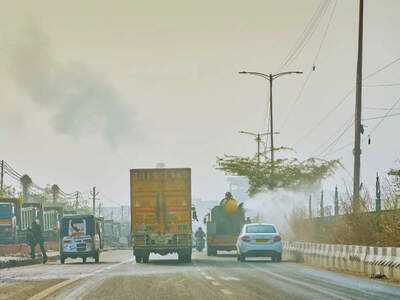Kathmandu is choking as it is covered by thick smog. This has made Nepal the world’s one of the most polluted countries. Kathmandu, which is also the capital of Nepal, has scored an Air Quality Index (AQI) of 348, placing it in the “hazardous” range. The scoring has sparked serious public health concerns. In response, authorities have sounded the alarm, advising residents to exercise caution as pollution levels show no sign of abating.
What heath ministry has to say
The Ministry of Health and Population (MoHP) has issued a formal advisory in light of the worsening air conditions. It says that vulnerable groups that include kids, senior citizens, pregnant women, and people with pre-existing health conditions should especially take preventive measures.
Spokesperson Prakash Budhathoki also stressed that these groups must be extra cautious due to the heightened risks associated with prolonged exposure.
Prime recommendations include
Staying indoors unless absolutely necessary
Using face masks when outside
Staying away of heavily polluted zones
Monitor local air quality updates
Limit outdoor physical activity during peak pollution hours
Nepal’s air pollution contains hazardous fine particulate matter (PM2.5), which can penetrate deep into the lungs. Unlike larger dust particles that are trapped by the upper respiratory system, PM2.5 can reach the bloodstream and cause a variety of health issues. These include respiratory infections, aggravated asthma, chronic bronchitis, and even acute episodes that may lead to fainting or dangerously low oxygen saturation in the blood.
Government data paints a scary picture

Air pollution is connected to an estimated 42,000 deaths annually in Nepal. Disturbingly, 19% of these deaths occur in children under the age of five, while 27% are among people over 70. The impact on public health is so severe that pollution is estimated to have cut the average life expectancy of Nepalis by 4.1%.
The AQI categorises air quality on a scale from 0 to over 300, where anything above 301 is considered “hazardous.” Kathmandu’s current level of 348 not only exceeds this threshold but also signifies an urgent health crisis that demands immediate action from both citizens and authorities.
As Kathmandu grapples with this environmental emergency, public awareness and adherence to health advisories are crucial to mitigating the risks of prolonged exposure to toxic air.
What heath ministry has to say
The Ministry of Health and Population (MoHP) has issued a formal advisory in light of the worsening air conditions. It says that vulnerable groups that include kids, senior citizens, pregnant women, and people with pre-existing health conditions should especially take preventive measures.
Spokesperson Prakash Budhathoki also stressed that these groups must be extra cautious due to the heightened risks associated with prolonged exposure.
Prime recommendations include
Staying indoors unless absolutely necessary
Using face masks when outside
Staying away of heavily polluted zones
Monitor local air quality updates
Limit outdoor physical activity during peak pollution hours
Nepal’s air pollution contains hazardous fine particulate matter (PM2.5), which can penetrate deep into the lungs. Unlike larger dust particles that are trapped by the upper respiratory system, PM2.5 can reach the bloodstream and cause a variety of health issues. These include respiratory infections, aggravated asthma, chronic bronchitis, and even acute episodes that may lead to fainting or dangerously low oxygen saturation in the blood.
Government data paints a scary picture
Air pollution is connected to an estimated 42,000 deaths annually in Nepal. Disturbingly, 19% of these deaths occur in children under the age of five, while 27% are among people over 70. The impact on public health is so severe that pollution is estimated to have cut the average life expectancy of Nepalis by 4.1%.
The AQI categorises air quality on a scale from 0 to over 300, where anything above 301 is considered “hazardous.” Kathmandu’s current level of 348 not only exceeds this threshold but also signifies an urgent health crisis that demands immediate action from both citizens and authorities.
As Kathmandu grapples with this environmental emergency, public awareness and adherence to health advisories are crucial to mitigating the risks of prolonged exposure to toxic air.
You may also like

Study feasibility of trade in local currency, says PM Modi's Bimstec action plan

Real Housewives of Cheshire stars dazzle as they join Aintree Ladies Day crowd

Koch-Rajbongshis not aliens, will drop cases, says Assam CM

Tony's Chocolonely issues urgent Easter egg warning over fears they could contain metal shards

Mumbai Weather Update: Gusty Winds And Unseasonal Rains Hit City; Yellow Alert Issued For Hot, Humid Days Ahead





